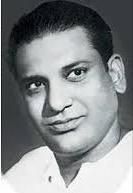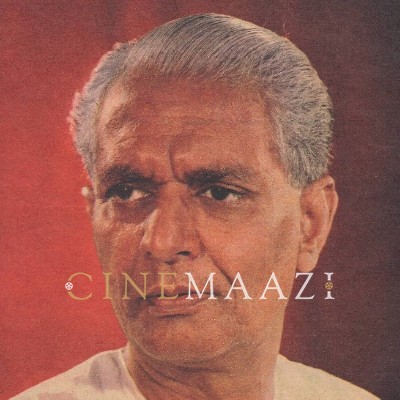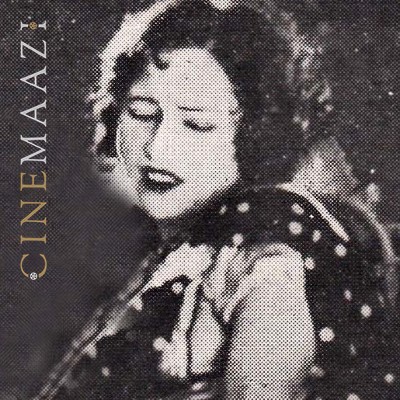Khemchand Prakash

Subscribe to read full article
This section is for paid subscribers only. Our subscription is only $37/- for one full year.
You get unlimited access to all paid section and features on the website with this subscription.
Not ready for a full subscription?
You can access this article for $2 , and have it saved to your account for one year.
- Born: 12 December 1907 (Sujangarh, Bikaner, Rajasthan)
- Died: 10 August 1950 (Bombay)
- Primary Cinema: Hindi
- Parents: Pandit Govardhan Prasad
- Spouse: Roopvati Kanhi
The talented and successful Khemchand Prakash, mentor to greats like Lata Mangeshkar, Kishore Kumar, Khursheed and Naushad, has almost faded out of public memory today. His unexpectedly early demise meant that he did not even live to see the song that catapulted Lata Mangeshkar to fame (Aayega aane waala, Mahal, 1949) and allowed her to rule the roost in Indian cinema music for six decades to come.
Khemchand Prakash’s life, though short, was an interesting one. He was born in Sujangarh in Rajasthan in a musical family to Pandit Govardhan Prasad and his second wife. Pt. Govardhan Prasad was a Dhrupad singer and Kathak dancer in the royal darbar of Jaipur. Khemchand’s musical training began at a young age when he learnt Hindustani classical music from his father, his uncle Gopalchand and Ustad Maula Baksh Dhavsi. He also trained in Kathak, learning from his older step brother Badri Prasad and Pandit Jailal. Proficient in Kathak, it was even rumoured that Khemchand could dance on swords, candles and red gulal powder.
At the age of 18, he joined the court of Jaipur as a singer and dancer, gaining immense popularity in a short period of time. He was specially invited to perform during the silver jubilee of Bikaner by Raja Gangasinhji, who also wanted him to join his court as the official artiste. Declining respectfully, Khemchand instead became the official performing artiste at the court of the King of Nepal, Naresh Rudra Shamsher Singh. When the king got ousted seven years later, Prakash left the court and shifted to Calcutta to try his luck. The move did not prove to be very opportune for him. While he did receive some assignments at AIR and gained experience, steady work was hard to find. In 1935, Timir Baran engaged him as an assistant for New Theatres, where he met and befriended Prithviraj Kapoor.
During this phase, Prakash even acted in small roles in films such as Street Singer (1938) and Sapera (1939) and is said to have played the tabla in Kapal Kundala (1940) to make ends meet and support his family. He was married to Roopvati Kanhi and had two children, a son and a daughter.
Prakash left Calcutta for Bombay in search of work. It is rumoured that two famous songs of Devdas (1936) in Hindi, 'Baalam Aaye Baso Mere Man Mein' and 'Dukh Ke Din Beetata Naahin' were actually Khemchand’s compositions when he was assisting Raichand Boral but he was not credited for them. This left him so dissatisfied that he left Calcutta shortly, supposedly with K.N. Singh and K.L. Saigal.
In Bombay, thanks to his friend, Prithviraj Kapoor, he could branch out as an independent music director for the film Ghazi Salahuddin (1939), assisted by Naushad. It had eight songs, including a famous ghazal by Mirza Ghalib, Kabhi neki bhi. Khemchand Prakash started his long association soon after, a collaboration which produced many immortal gems.
As part of Ranjit Movietone, Prakash went on to compose music for nineteen films in five years. Pardesi (1941) , Shaadi (1941) , Holi (1940) and Dukh-Sukh (1942) followed in quick succession – all hits with memorable songs such as Toot gayi daali (sung by Khursheed), Ab der na kar sajan (Mukesh, Khursheed), Mori atariya pe aa jaa (Mukesh, Khursheed), Hai tujhko fikar hi kya (Rajkumari).
His soulful music made him extremely popular and he soon started composing music for other banners as well, with films like Chirag (1943) and Kurbani (1943) for Murli Movietone. The songs of Gauri (1943) became hugely successful as well, but it was Tansen (1943) with which Khemchand, assisted by Bulo C. Rani, broke all previous records. Starring the singing stars K.L. Saigal and Khursheed, Tansen is still remembered as one of the best musicals ever made in the annals of Indian cinema. The iconic songs from the film include Bagh laga doon sajani, Runjuhun runjhun chaal tihari, Dukhiyara jiyara and Barso re ghata ghanghor, all based on different ragas. Other movies with this banner included Bharthari (1944), Mumtaz Mahal (1944), Shahenshah Babar (1944) and Dhanna Bhagat (1945).
Prabhu ka Ghar (1947) was the last film he worked on under Murli Movietone. Facing artistic differences with Chandulal Shah, Khemchand left Murli Movietone once Khursheed migrated to Pakistan since he found the selected new singer’s voice too thin. Convinced of his choice, he started freelancing. His new voice of choice was the now legendary Lata Mangeshkar.
Khemchand Prakash used Lata Mangeshkar’s voice in the film Asha (1948). The song was Marne ki duayein kya mangoon, sung in the style of K.L. Saigal. Hit movies such as Rimjhim (1949) and Sawan Aya Re (1949) followed. Khemchand’s work in the movie Mahal (1949) cemented his success as a music director, and fortunately so. Some sources claim that Ashok Kumar and Savak Vacha of Bombay Talkies were against hiring Khemchand as music director, but Kamal Amrohi remained firm in his choice and did not budge, leading to a very fruitful collaboration. Recorded with just twelve instruments and with an effect of distance created, the song Aayega aane wala in the film created history. Lata Mangeshkar had arrived and how! However, Khemchand Prakash did not live long enough to enjoy the adulation and success. Barely two months after the movie Mahal was released, he passed away on August 10 1950. His last film Tamasha (1952) was released posthumously with his one-time assistant Manna Dey and composer S.K. Pal completing the incomplete compositions.








.jpg)



